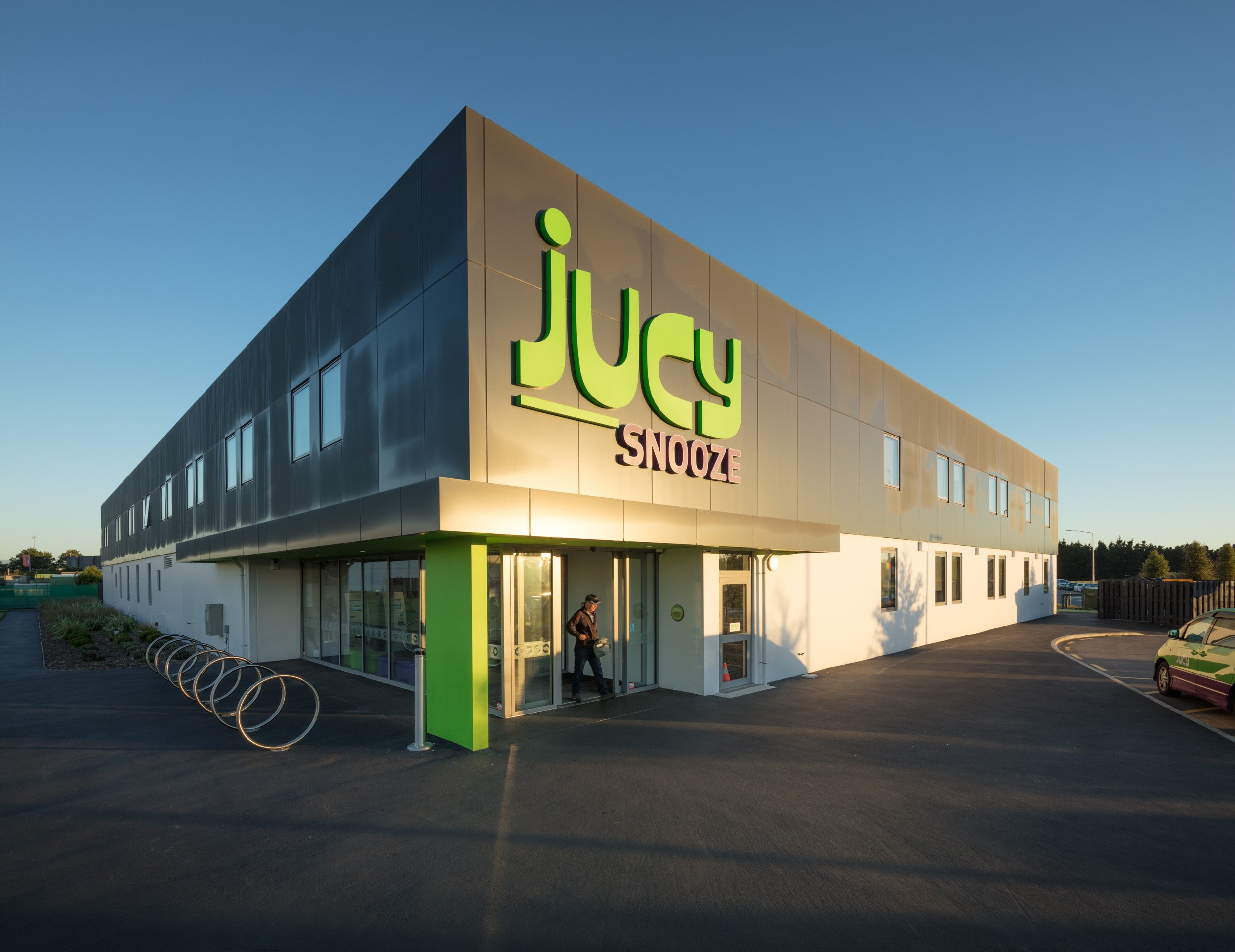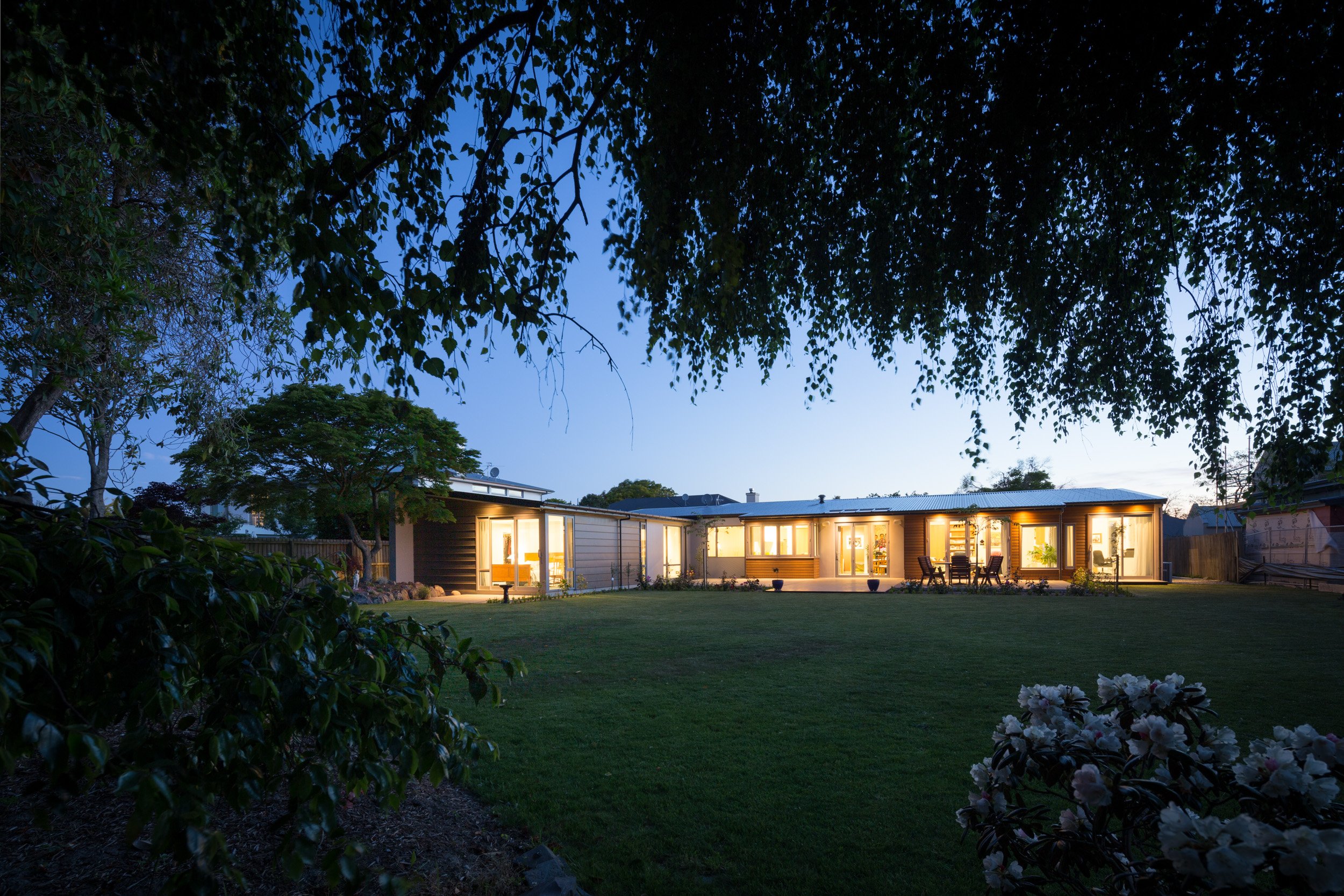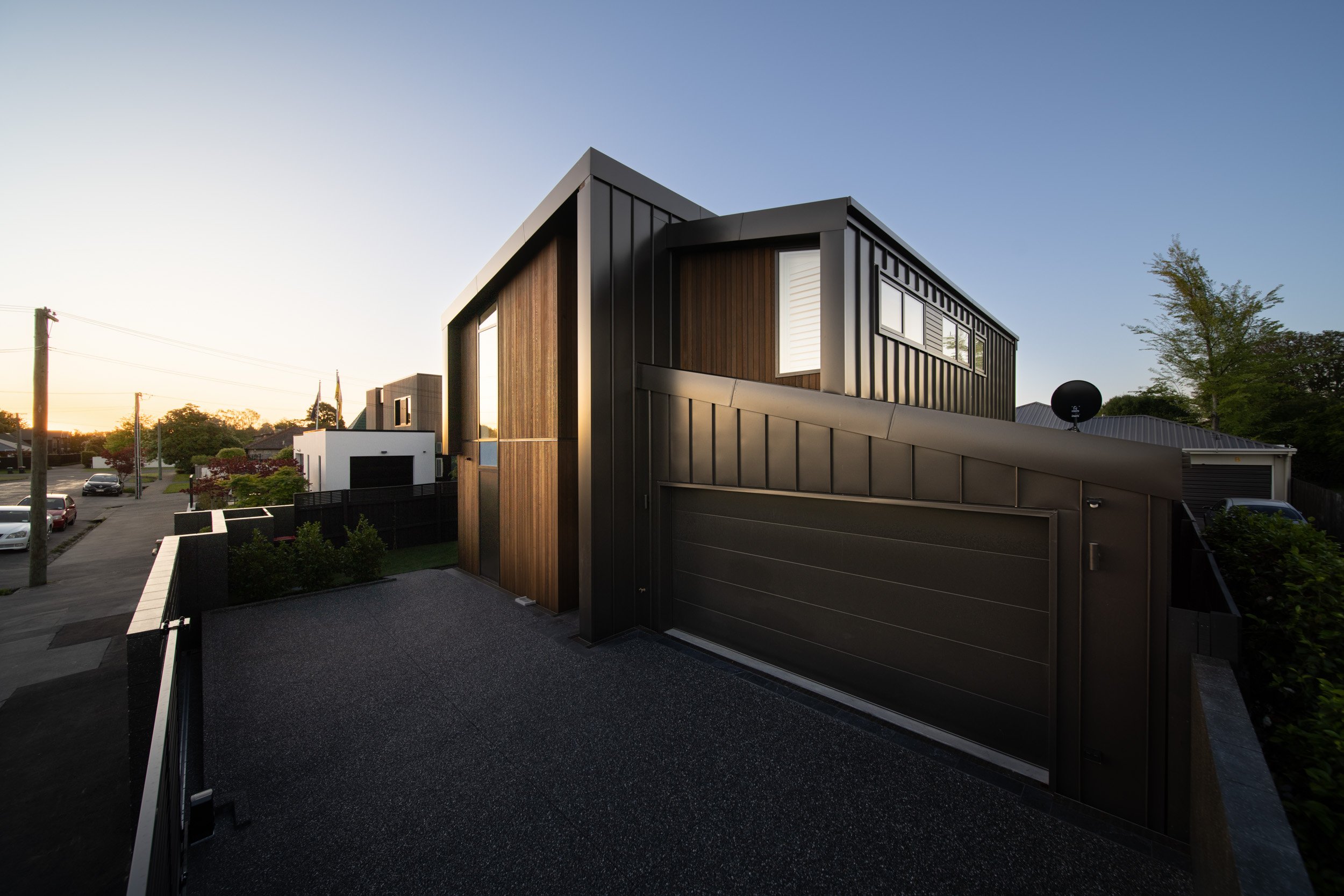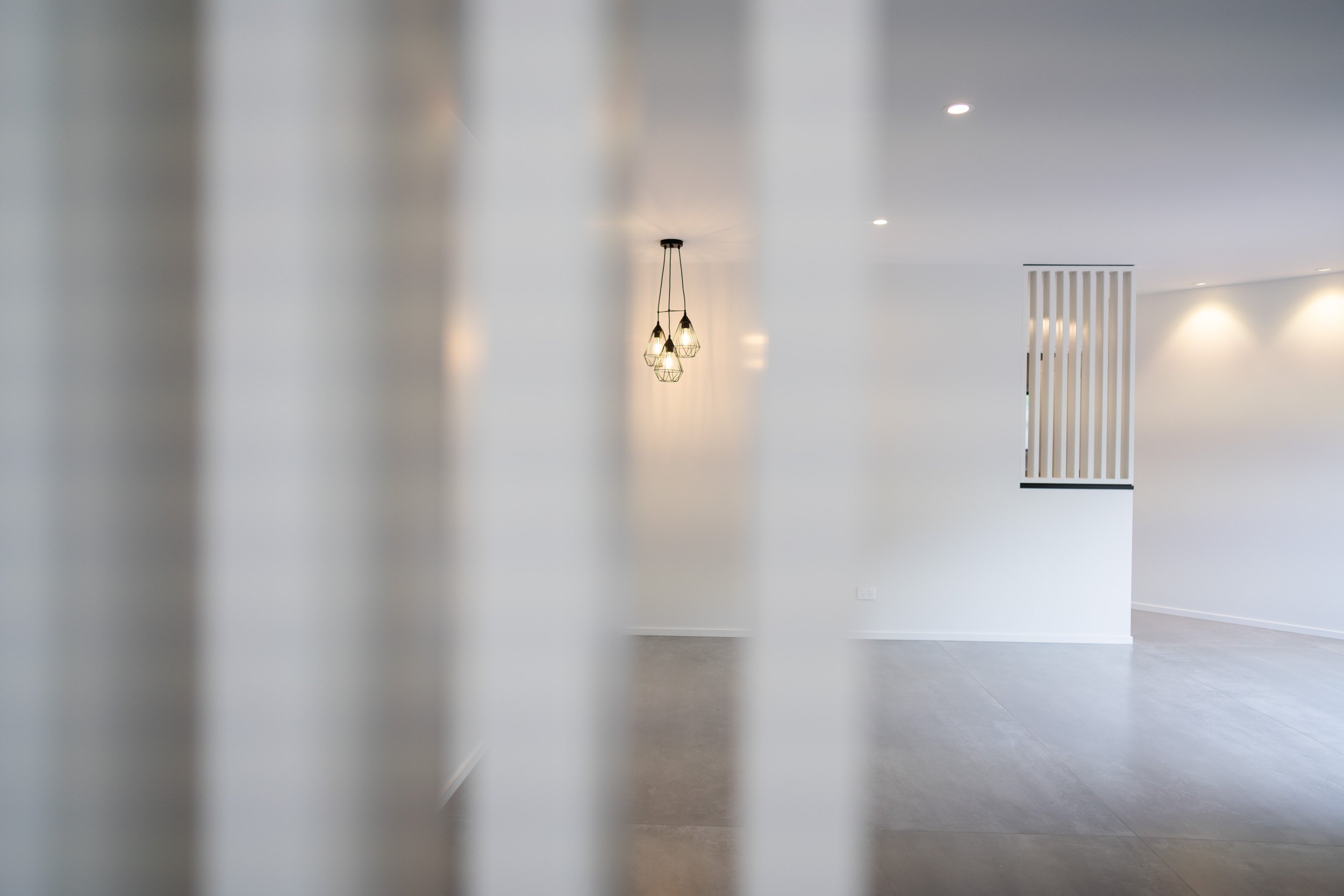Architecture and Light
Sumner Library, ChristchurchLight can make all the difference in architectural photography. It highlights form and provides mood and atmosphere. On every assignment, I try to optimise for lighting, as it creates beautiful evocative images and highlights the skill of the architect’s design.
Rather than adding light, I prefer to work with natural light and the existing artificial light - this keeps the photography looking real.
By using a tripod and long exposures, I can include detail in very dark areas. Exposure blending, and HDR, are techniques I employ when the range of exposure from highlight to shadow is too extreme to capture in a single exposure. When shooting directly into sunlight, I employ a number of techniques to avoid sunflare softening an image and blowing out highlights.
Mary Potter Apartments, ChristchurchDifferent locations photograph better at different times of the day. Early morning and late evening can provide very different looks at the same location. Overcast, wet conditions are generally avoided for exterior photography, as the lighting tends to be very flat and the images can look drab and unappealing. At the same time, overcast light is great for photographing interiors. Overcast light is soft and diffused, whereas bright sunlight through windows is harsh and high contrast.
Mixing artificial and natural light in the early morning or late evening can also be magic. The trick is picking just the right moment when ambient light and artificial light provide a nice balance. Too late and the sky and shadows go pitch black, too early and the effect of artificial light is too subtle.
There is no one surefire lighting, or time of day, that works for all locations. Any light can be good light in the right situation; it just has to make the location look appealing, highlight certain features, and hold the viewer’s interest.
So the one rule to rule them all is the light needs to be … interesting.


























